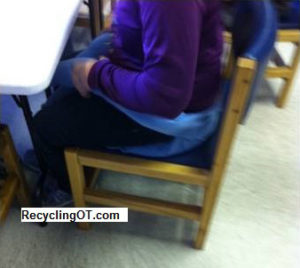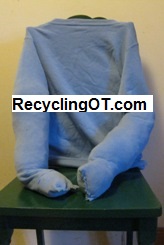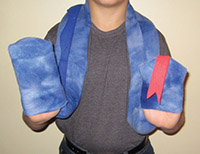One of the essential back-to-school items on every parent’s shopping list is a new backpack. Beginning in preschool and progressing all the way through high school, kids use their backpacks every day. As therapists, we are aware that how that backpack is filled and carried will either create problems for kids or solve them. A pack that is too heavy, so full that it creates perceptual, sensory or cognitive roadblocks to organization, or missing essential tools for kids with special needs, is not doing it’s job. With targeted education and the introduction of simple alternative strategies, we can improve the chances that backpacks end up helping every child perform well during this school year.
Here are some ways to help students manage their backpacks for optimal performance throughout the school year:
- Lighten up. Kids tend to make their packs heavier than they need to be. Hypermobile kids, kids with orthopedic issues and kids with low tone may be carrying packs that put them at significant risk for injury. Make sure parents are aware of this issue, and help them by suggesting a review of backpack contents and downsizing the “essentials” whenever possible. Small water bottles, travel sizes of toiletries, and a minimum number of pencils, pens or markers lighten the load. For kids that aren’t aware of the sensory or cognitive overload of an overfilled pack, a backpack checklist or a smaller pack help them manage without an adult assuming responsibility for content management.
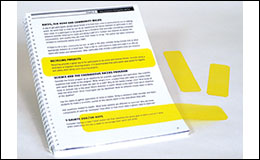
- Teach kids how to pack and wear their pack. The heaviest items should be carried close to the body and content weight should be distributed equally across the back. Kids should use both straps when wearing their backpack. The one-shoulder carry can be preferred by middle-schoolers wishing to look “cool”. This overweighting of one side of the body puts them off balance and at-risk for injury. It may be hard to change habitual behavior in children at this age. Try identifying the child or children who seem to be admired and copied by their peers. Influencing the kids who are acknowledged social leaders can change class culture quickly. Don’t wait until children report neck and shoulder pain, but remind parents and teachers that the risk of strains, sprains and exacerbations of issues seen in tweens and teens like scoliosis are real.
- Frequently used items should be quickly accessible in surface pockets, and items they need for their first class are reachable when they open their pack, not packed under other materials. Laminated photos of pocket contents can help children learn the habits of efficient storage.
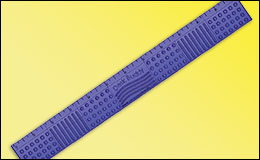
- Help kids remember to use their sensory tools by having them handy. Tools like Highlighter Strips and the Desk Buddy Multi-Textured Ruler are slim and can be left between pages of a book or workbook, ready to be used. Calming tools like the Wristful Fidget can be worn, not shoved into a pack. Since it looks like a sport wrap, kids aren’t as eager to toss it away when they pack up and go! Kids may need more than one set of tools so that they can leave a set at school and another one at home. Items that do more than one job, like the Desk Buddy Ruler, have an advantage over carrying a bunch of fidgets and then an equal number of classroom tools.
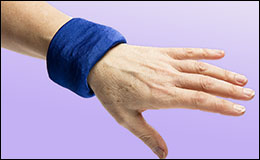
- Accept that altering behavior is a long game. Don’t get discouraged if kids only use some of these strategies to improve how they manage their backpacks. Habits change slowly, and as the demands of the school year mount, it may take periodic reviews and revisions to find the right combination of equipment, organization and carrying strategies to make a difference!
Gueste Blogger: Cathy Collyer, OTR, LMT, PLLC
 Cathy Collyer, OTR, LMT has treated children with neurological, orthopedic and sensory processing disorders for over 20 years. She is the author of The Practical Guide To Toilet Training Your Child With Low Muscle Tone. Learn more about her work at tranquilbabies.com.
Cathy Collyer, OTR, LMT has treated children with neurological, orthopedic and sensory processing disorders for over 20 years. She is the author of The Practical Guide To Toilet Training Your Child With Low Muscle Tone. Learn more about her work at tranquilbabies.com.


